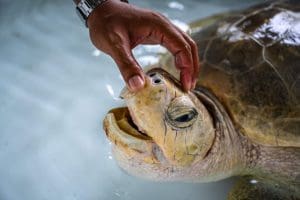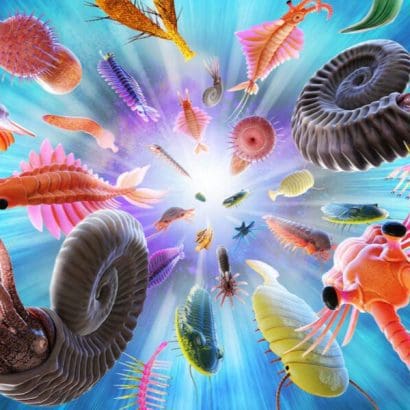
The migration of sea turtles is a fascinating natural phenomenon that captivates the imagination of many. These magnificent creatures embark on incredible journeys across the world’s oceans, driven by instinct and a need to fulfill essential aspects of their life cycle. In this article, we will explore the timing of sea turtle migration and delve into the reasons behind this awe-inspiring phenomenon.
Sea turtles are known for their remarkable ability to navigate vast distances and return to specific nesting beaches or foraging grounds. Understanding when and why sea turtles migrate is crucial for their conservation and offers us valuable insights into the complex dynamics of marine ecosystems. So, let’s dive into the intriguing world of sea turtle migration and unravel the mysteries surrounding their remarkable journeys.
Contents
Migratory species of sea turtles.
Sea turtles are magnificent creatures that exhibit remarkable migratory behaviors as they navigate the vast oceans. Several species of sea turtles undertake extensive journeys, spanning thousands of miles, to fulfill their various life cycle requirements. Let’s explore some general information about migratory species of sea turtles:
Loggerhead Turtle (Caretta caretta):
-
- The loggerhead turtle is one of the most widely distributed species of sea turtles and exhibits both nesting and foraging migrations.
- They are known to travel long distances, often crossing entire ocean basins, to reach their preferred feeding grounds.
- Loggerheads are known to migrate between nesting beaches in tropical and subtropical regions and foraging areas in coastal and offshore waters.
Green Turtle (Chelonia mydas):
-
- Green turtles are renowned for their migrations between feeding areas and nesting beaches.
- They are primarily herbivorous and undertake extensive journeys to reach seagrass beds and algae-rich habitats.
- Green turtles are known to nest in tropical and subtropical regions, and their foraging grounds can be found in various coastal and offshore locations.
Leatherback Turtle (Dermochelys coriacea):
-
- Leatherback turtles hold the title for being the largest species of sea turtles and are globally distributed.
- They are highly migratory and known for their long-distance journeys.
- Leatherbacks undertake transoceanic migrations, traveling from nesting sites to distant foraging areas where they feed on jellyfish.
Hawksbill Turtle (Eretmochelys imbricata):
-
- Hawksbill turtles have a more limited range compared to other sea turtle species but still undertake notable migrations.
- They migrate between nesting beaches and foraging grounds, which are often located near coral reefs.
- Hawksbill turtles play a crucial role in maintaining the health of coral reef ecosystems by feeding on sponges and controlling their population.
Olive Ridley Turtle (Lepidochelys olivacea):
-
- Olive ridley turtles are known for their synchronized mass nesting events, known as arribadas.
- They undertake both short and long-distance migrations between nesting beaches and foraging areas.
- Olive ridleys can be found in warm waters worldwide and are known for their opportunistic feeding habits.
Migration patterns.
Migration is a fundamental behavior observed in various animal species, including birds, mammals, and even sea turtles. These migration patterns involve regular and often cyclical movements between different geographic locations in search of food, breeding grounds, or favorable environmental conditions. Let’s explore some general information about migration patterns:
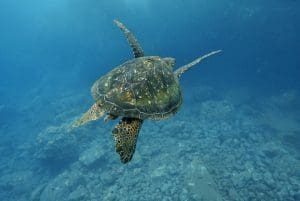
Seasonal migration:
-
- Many migratory species, including sea turtles, exhibit seasonal migration patterns.
- Seasonal changes in temperature, resource availability, or breeding conditions trigger the need to move to different areas.
- Sea turtles may migrate to warmer regions during the colder months or move to cooler waters to escape high temperatures.
Feeding migration:
-
- Some migratory species, including sea turtles, undertake migrations primarily for feeding purposes.
- Sea turtles may travel long distances to reach areas rich in their preferred food sources, such as seagrass beds, coral reefs, or areas abundant in jellyfish.
- These migrations ensure that sea turtles can access sufficient food resources to sustain themselves and maintain their energy levels.
Reproductive migration:
-
- Reproductive migration is a common pattern observed in many species, including sea turtles.
- Female sea turtles often migrate from their feeding grounds to specific nesting beaches to lay their eggs.
- Nesting beaches provide suitable conditions for egg incubation, such as sandy beaches with the right temperature and moisture levels.
Multiple destinations:
-
- Migration patterns of sea turtles can involve multiple destinations.
- For example, sea turtles may travel from their nesting beaches to different foraging areas and return to their original nesting site for subsequent breeding seasons.
- The ability to navigate multiple destinations demonstrates the remarkable navigational abilities and homing instincts of sea turtles.
Environmental cues:
-
- Migration patterns are often guided by environmental cues, including celestial navigation, magnetic fields, and visual landmarks.
- Sea turtles can rely on these cues to navigate across vast distances, often returning to the same nesting beaches or foraging areas year after year.
Migration season.
Migration season refers to the specific period during which migratory species, such as sea turtles, undertake their long-distance journeys between different habitats or geographical locations. This seasonality is influenced by various factors, including environmental conditions, resource availability, and reproductive cycles. Here is some general information about migration seasons: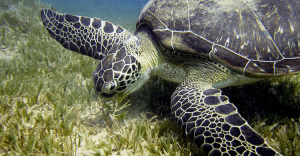
Timing:
-
- Migration seasons can vary among different species of migratory animals, including sea turtles.
- The timing of migration is often influenced by factors such as changes in temperature, daylight hours, and food availability.
- In the case of sea turtles, migration seasons can occur during specific times of the year when conditions are most suitable for their movement and survival.
Seasonal changes:
-
- Migration seasons are often associated with changes in environmental conditions.
- For example, sea turtles may migrate to warmer waters during colder seasons to maintain their body temperature, or they may move to cooler waters during hotter seasons to avoid overheating.
- These seasonal changes play a crucial role in the overall migration patterns of sea turtles.
Breeding and nesting:
-
- For migratory species like sea turtles, migration seasons may coincide with breeding and nesting cycles.
- Female sea turtles often migrate to specific nesting beaches during their breeding season to lay their eggs.
- These nesting migrations occur when the conditions are optimal for egg incubation and ensure the survival of the next generation.
Species-specific variations:
-
- Different species of sea turtles may have variations in their migration seasons.
- For example, some species may migrate during specific months or seasons, while others may have more extended or less predictable migration periods.
- The specific migration seasons can be influenced by factors such as the species’ geographic range, feeding preferences, and reproductive behavior.
Reasons behind migration.
Migration is a complex phenomenon observed in various animal species, including sea turtles. These remarkable journeys are driven by specific reasons and serve important purposes in the life cycle of migratory species. Here is some general information about the reasons behind migration: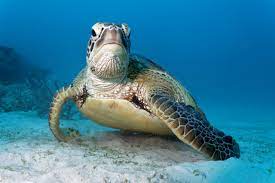
Food resources:
-
- One of the primary reasons behind migration is the availability of food resources.
- Migratory species, including sea turtles, often move to different areas in search of abundant food sources.
- For example, sea turtles may migrate to regions where seagrass beds or coral reefs flourish, providing them with a plentiful supply of their preferred food items.
Reproduction:
-
- Reproduction is a significant motivator for migration in many species, including sea turtles.
- Female sea turtles often migrate from their feeding grounds to specific nesting beaches to lay their eggs.
- These nesting migrations ensure that the eggs are laid in suitable conditions, such as sandy beaches with optimal temperature and moisture levels for successful incubation.
Environmental factors:
-
- Environmental factors play a crucial role in triggering migratory behavior.
- Changes in temperature, water currents, or other environmental cues can prompt migratory species to move to more favorable habitats.
- For example, sea turtles may migrate to warmer waters during colder seasons to maintain their body temperature, or they may move to cooler waters to escape heat stress.
Breeding opportunities:
-
- Migration provides opportunities for migratory species to find suitable mates and ensure successful breeding.
- Migratory behaviors allow individuals from different populations or regions to come together for reproductive purposes.
- By seeking out specific breeding grounds, migratory species can increase genetic diversity and enhance their chances of successful reproduction.
Survival and resource optimization:
-
- Migration allows species to optimize their chances of survival and resource utilization.
- By moving to different habitats, migratory species can escape harsh environmental conditions, such as extreme temperatures or limited resources.
- Migration also enables access to diverse resources, such as different feeding grounds or safer areas with fewer predators.
Challenges and threats during migration.
Migration is a challenging endeavor for many species, including sea turtles. During their long-distance journeys, migratory animals face various obstacles and threats that can significantly impact their survival and successful completion of the migration. Here is some general information about the challenges and threats faced by migratory species during migration:
Predators:
-
- Predators pose a significant threat to migratory species during their journey.
- Along migratory routes, animals may encounter predators such as sharks, birds of prey, or other marine predators that can prey upon them.
- The risk of predation increases when migratory animals are in unfamiliar territories or crossing areas where predators are abundant.
Physical barriers:
-
- Migratory animals often encounter physical barriers that impede their migration.
- These barriers can include natural obstacles like mountains, rivers, or deserts, as well as human-made structures such as dams, fences, or roads.
- These barriers can disrupt migratory routes and force animals to take detours or find alternative paths, leading to increased energy expenditure and potential delays.
Habitat loss and degradation:
-
- The loss and degradation of critical habitats along migratory routes pose a significant threat to migratory species.
- Human activities, such as coastal development, pollution, and habitat destruction, can negatively impact the availability and quality of essential habitats for migratory animals.
- Destruction or degradation of nesting beaches, feeding grounds, or resting areas can disrupt the natural rhythms of migration and limit the resources needed for survival.
Climate change:
-
- Climate change poses a growing threat to migratory species.
- Shifts in temperature, ocean currents, and weather patterns can alter the availability of food, nesting conditions, and migration timing.
- Changes in temperature can impact the phenology of resources along migratory routes, causing mismatches between the timing of migration and resource availability.
Human activities:
-
- Human activities can have significant negative impacts on migratory species.
- Fishing practices, such as bycatch, can result in the accidental capture and mortality of migratory animals like sea turtles.
- Pollution, including marine debris and chemical contaminants, can harm migratory species and disrupt their behavior and physiology.
The importance of understanding and preserving the migration of sea turtles.
In conclusion, the understanding and preservation of the migration of sea turtles hold paramount importance for both the survival of these magnificent creatures and the health of marine ecosystems.
Comprehending the intricacies of sea turtle migration patterns provides valuable insights into their life cycles, behaviors, and habitat requirements. By studying their migratory routes, scientists can identify critical nesting beaches, foraging grounds, and migration corridors that require special protection and conservation measures.
Preserving the migration of sea turtles is crucial for maintaining the balance of marine ecosystems. As sea turtles migrate, they play crucial ecological roles such as seed dispersal, grazing on seagrass beds, and controlling jellyfish populations. These activities contribute to the health of coral reefs, seagrass meadows, and other marine habitats.
If you want to discover another fascinating marine curiosity, click here.

